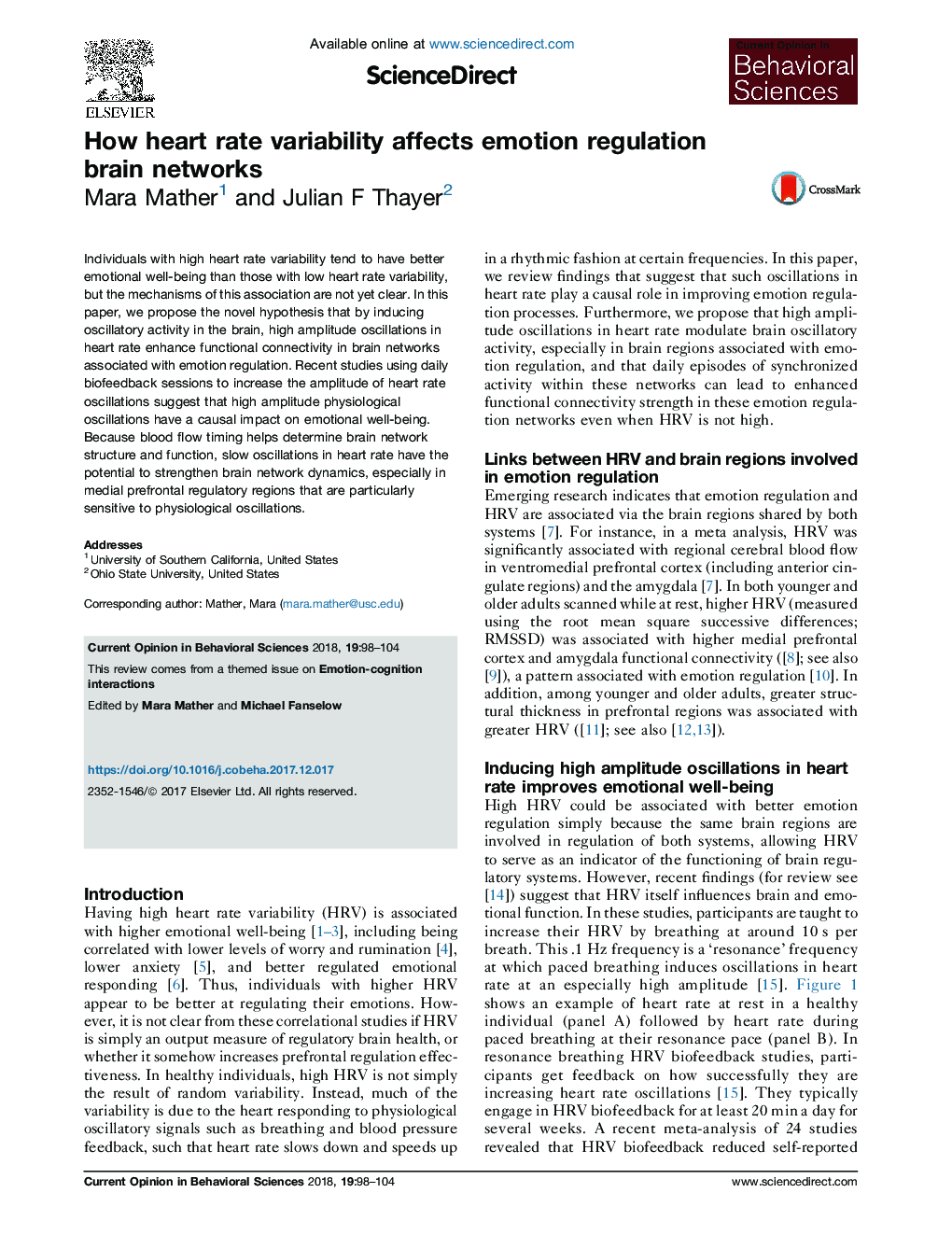| Article ID | Journal | Published Year | Pages | File Type |
|---|---|---|---|---|
| 8838182 | Current Opinion in Behavioral Sciences | 2018 | 7 Pages |
Abstract
Individuals with high heart rate variability tend to have better emotional well-being than those with low heart rate variability, but the mechanisms of this association are not yet clear. In this paper, we propose the novel hypothesis that by inducing oscillatory activity in the brain, high amplitude oscillations in heart rate enhance functional connectivity in brain networks associated with emotion regulation. Recent studies using daily biofeedback sessions to increase the amplitude of heart rate oscillations suggest that high amplitude physiological oscillations have a causal impact on emotional well-being. Because blood flow timing helps determine brain network structure and function, slow oscillations in heart rate have the potential to strengthen brain network dynamics, especially in medial prefrontal regulatory regions that are particularly sensitive to physiological oscillations.
Related Topics
Life Sciences
Neuroscience
Behavioral Neuroscience
Authors
Mara Mather, Julian F Thayer,
